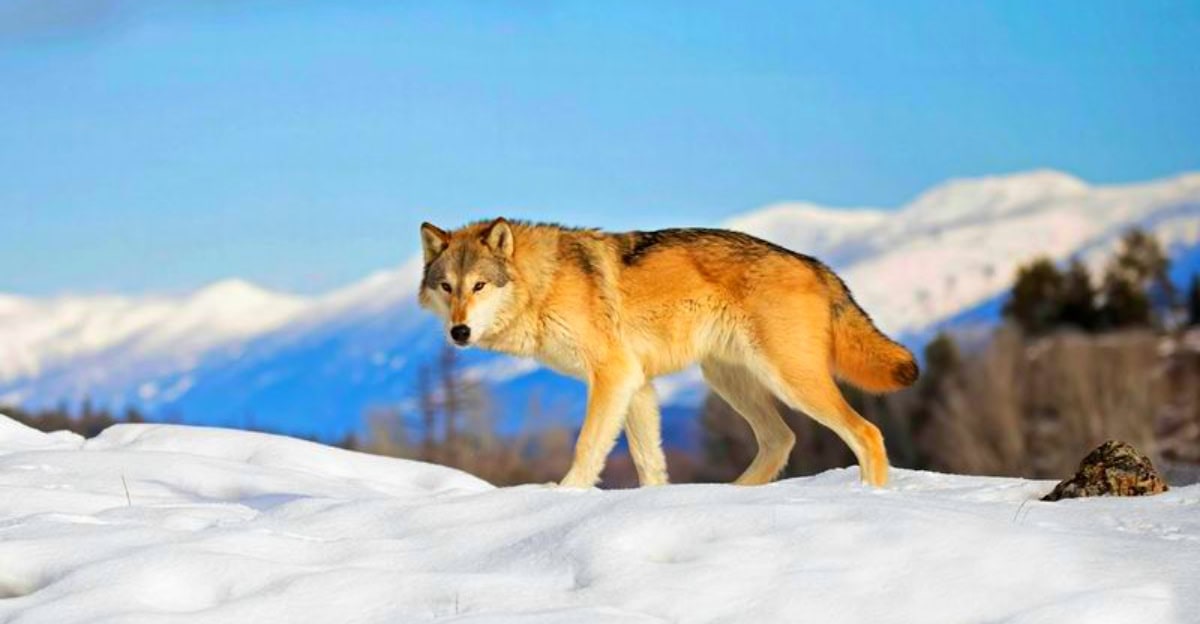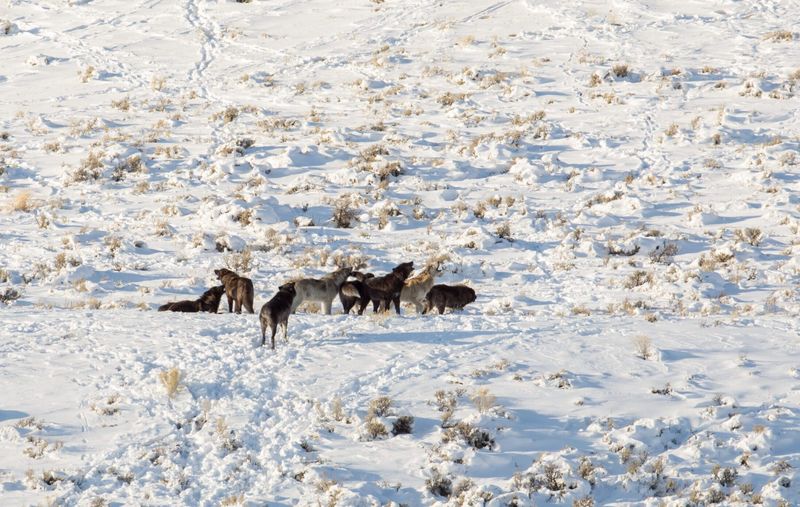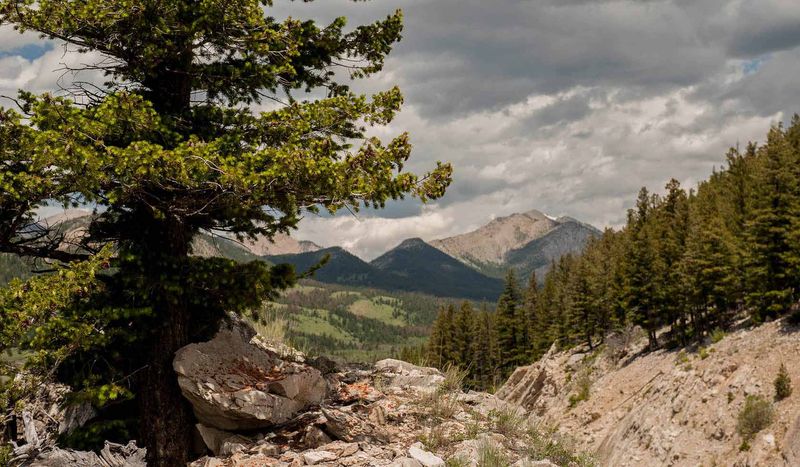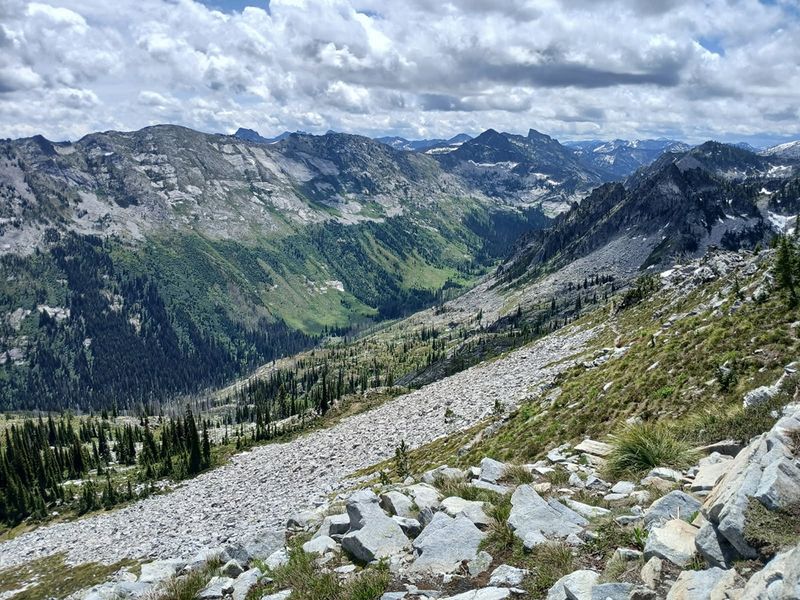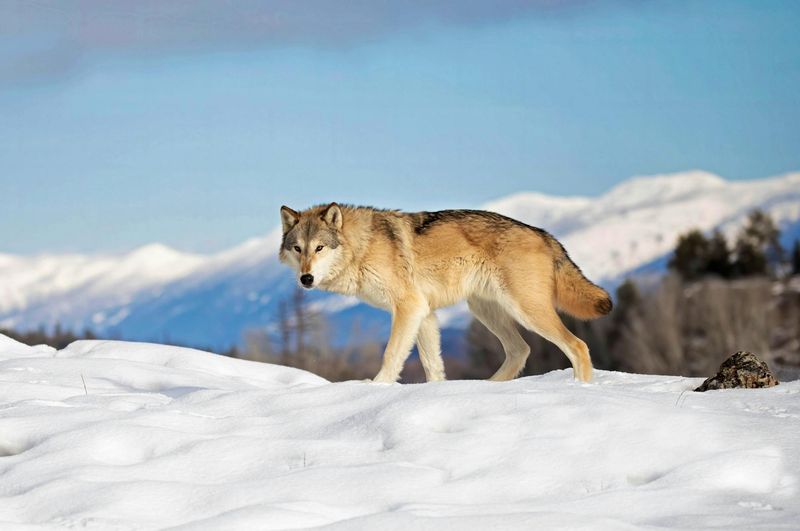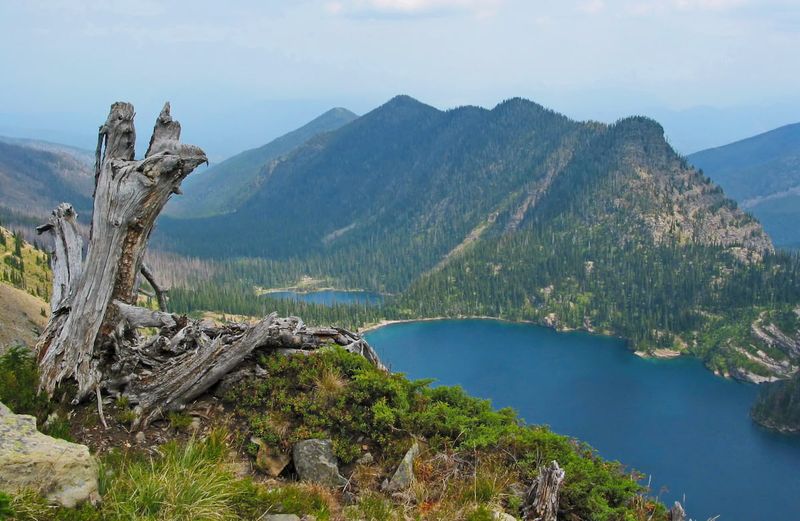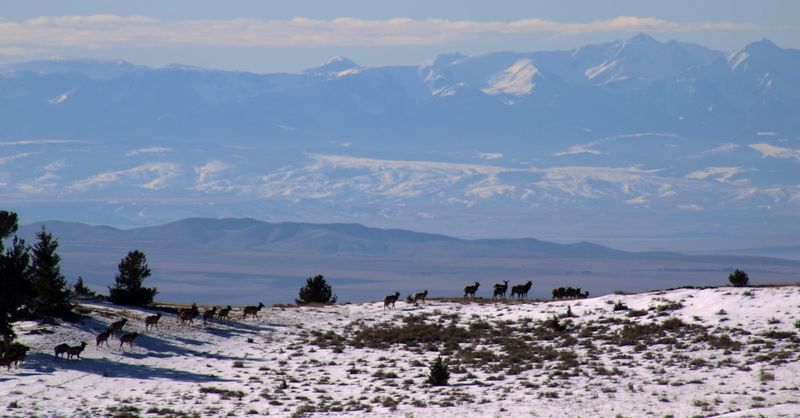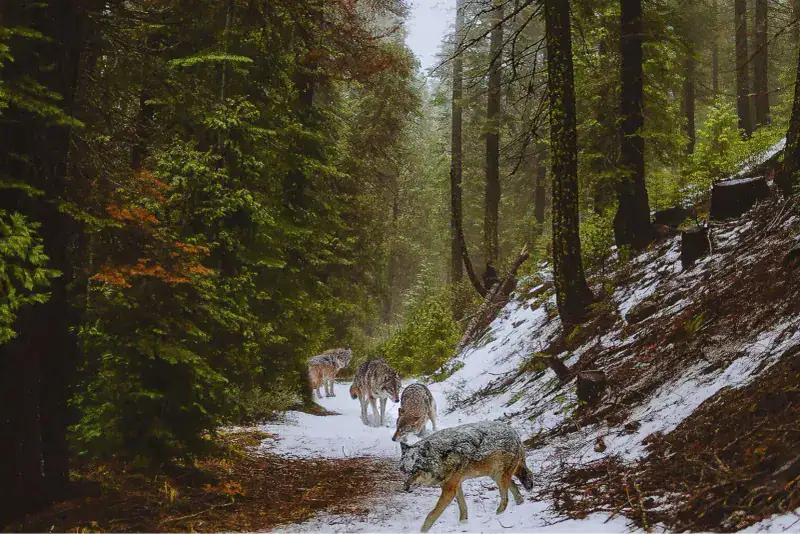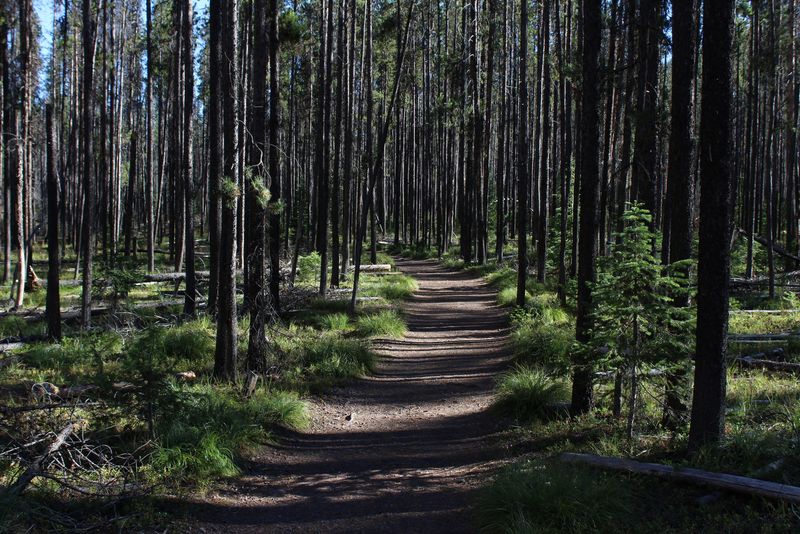Montana is one of the last strongholds for wild wolves in the United States. With over a thousand wolves roaming the state, encounters aren’t unheard of – especially in areas where they compete with humans for space and resources. While wolf attacks on people are rare, hiking alone in certain zones raises the risk of surprise encounters, territorial behavior, or being mistaken as prey. Below are the wolf-heavy regions of Montana where lone hikers should think twice before heading out.
1. Glacier National Park’s Backcountry
Glacier’s remote valleys and forests, where wolves were reintroduced decades ago, provide a mysterious allure. Rangers frequently track wolf packs in areas like the North Fork and Many Glacier, especially when winter snows blanket the trails. The solitude of these valleys, combined with the scarcity of prey in colder months, heightens the chances of a surprise encounter with these majestic predators.
Hiking here alone demands vigilance and respect for the wilderness. The tracks left by wolves whisper stories of their nocturnal wanderings, urging hikers to stay alert. Winter transforms the landscape into a silent canvas, where lone footsteps can invite curious eyes.
The park’s beauty is undeniable, yet its untamed spirit warns lone adventurers of nature’s unpredictable embrace.
2. Bob Marshall Wilderness Complex
Known affectionately as “The Bob,” this million-acre expanse south of Glacier is a haven for wolves, thanks to an abundance of elk and deer. The rugged terrain offers a sense of wild adventure, drawing those who seek isolation and raw beauty. However, this isolation can quickly turn risky for solo hikers.
Lack of cell service and the possibility of stumbling upon a den site add to the tension. Here, the wilderness speaks loudly through the howls echoing in the night.
Explorers are reminded that their footprints are fleeting in such a vast domain. The land’s untamed beauty is both captivating and cautionary, urging respect and prudence from those who wander alone.
3. Bitterroot Mountains
Straddling the Idaho-Montana border, the Bitterroots have seen wolf numbers flourish since the 1990s. The ruggedness of these mountains attracts adventurous souls, yet it serves as a reminder of nature’s raw power. Wolf sightings are frequent here, reported by hunters and ranchers in Ravalli County.
Solo hikers on remote trails, particularly near the Selway-Bitterroot Wilderness, should remain vigilant. The steep inclines and dense forests can obscure the presence of these elusive predators.
Adventure beckons in these mountains, with trails that twist and turn through breathtaking vistas. Yet, the haunting howls serve as a reminder of the wild companions that share this untamed land. Hiking alone here is not for the faint-hearted.
4. Yellowstone’s Northern Range (Montana Side)
Though most of Yellowstone lies in Wyoming, the park extends into southern Montana, where the famous Druid Peak and Junction Butte packs roam. The wolves here are less fearful of humans, accustomed to the gaze of tourists and the click of cameras.
Hiking alone raises vulnerability, as wolves explore the northern range with curiosity. Their presence can be both mesmerizing and unsettling.
The landscape is a canvas of rolling hills and hidden valleys, where each step could lead to a silent observer. The park’s storied past with wolves adds a layer of intrigue, making every encounter a chapter in a continuing saga of coexistence.
5. Gallatin National Forest
Stretching north of Yellowstone, the Gallatin serves as a corridor for wolves moving between park boundaries and Montana’s interior. Backcountry hunters and skiers often cross paths with these elusive creatures during their winter pursuits.
Lone hikers are at greater risk, especially when snow covers the trails and muffles footsteps. The forest’s serene beauty can quickly become a stage for unexpected encounters.
The chill in the air carries the echoes of wolves communicating across distances, a reminder of their dominance in this realm. Each step through the snow is a journey into the heart of the wilderness, where nature’s rules reign supreme.
6. Cabinet Mountains Wilderness
Tucked in northwest Montana, Cabinet Mountains Wilderness harbors one of the densest wolf populations in the state. The high basins and remote lakes offer solace, yet they also hide the protective instincts of wolf packs.
Solitary hikers may unknowingly venture near rendezvous sites, where adults guard their young fiercely. The landscape, though stunning, comes with invisible boundaries marked by nature’s protectors.
The wilderness here is both a sanctuary and a challenge, inviting exploration while commanding respect. The dance between isolation and interaction creates a dynamic that echoes through the valleys and peaks.
7. Helena-Lewis and Clark National Forest
Central Montana’s mountain ranges, including the Little Belts and Big Belts, serve as pathways for wandering wolves. The dispersal in these areas is frequent, creating a unique dynamic for those exploring alone.
Long stretches without encountering other hikers increase the potential for wolves to investigate out of curiosity. The forest’s vastness fosters a sense of insignificance in the face of nature’s grand design.
Each trail offers a narrative of survival and adaptation, where hikers are mere visitors in an ancient land. The interplay of solitude and wildlife adds an edge to every journey, urging caution and awareness.
8. Flathead National Forest
Bordering Glacier, Flathead National Forest is prime territory for wolves, where dense woods create a labyrinth of unseen trails and sudden encounters. The thick canopy limits visibility, shrouding the land in mystery.
Solo backpackers face risks as wolves, drawn by the scent of food, may approach campsites. The forest’s silence is occasionally broken by the rustle of unseen creatures.
The allure of adventure is balanced by the knowledge of sharing space with nature’s apex predators. Each rustle and snap of a twig serves as a gentle reminder of the vigilant eyes hidden in the shadows.
9. Lolo National Forest
Covering over two million acres in western Montana, Lolo National Forest is home to several wolf packs. The trails here weave through dense foliage, creating a sense of being enveloped by nature.
Wolves are known to silently accompany hikers, a behavior that can unsettle even the most seasoned adventurers. The thrill of the trail is tinged with the knowledge of unseen observers.
The forest’s beauty is captivating, yet the potential for encounters adds a layer of tension to each step. The interplay of tranquility and the unknown makes solo journeys here both exhilarating and cautionary.
10. Swan Valley
Between the Mission and Swan ranges, Swan Valley serves as a predator hotspot, where wolves and mountain lions coexist. The valley’s beauty is marked by a rugged charm that appeals to those seeking solitude.
Ranchers’ reports of depredations underline the wolves’ familiarity with confrontations, adding an edge for lone hikers. The valley’s expansiveness can be deceiving, masking the presence of apex predators.
Venturing alone here requires keen awareness and respect for the natural order. The landscape is a testament to the delicate balance between beauty and danger, providing a narrative of survival and adaptation.
